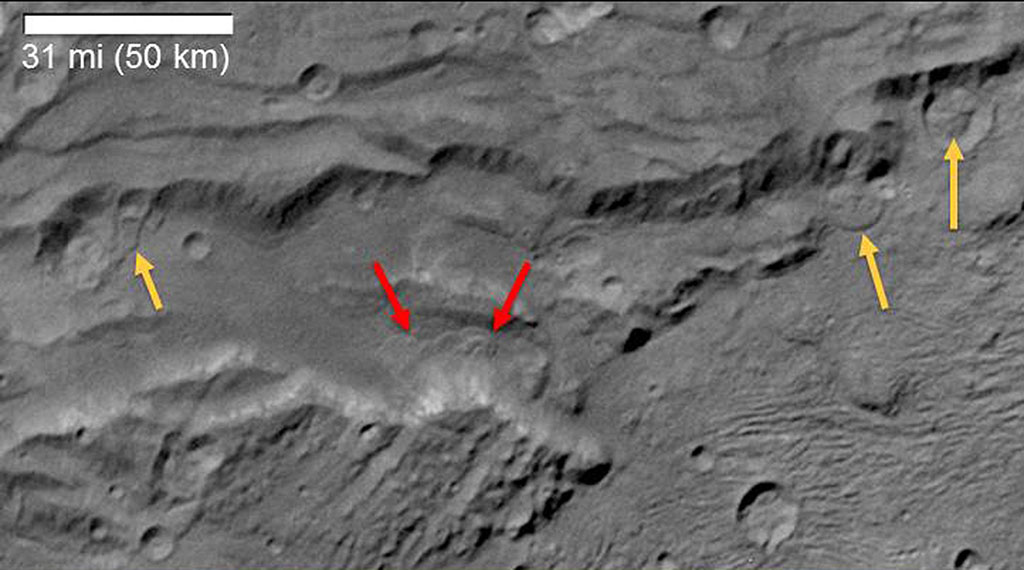Scientists from NASA’s New Horizons mission have spotted signs of long run-out landslides on Pluto’s largest moon, Charon. On this image of Charon’s informally named “Serenity Chasma,” from New Horizons’ Long Range Reconnaissance Imager (LORRI), arrows mark indications of landslide activity. (NASA/Johns Hopkins University Applied Physics Laboratory/Southwest Research Center)
Home Scientists from NASA’s New Horizons mission have spotted signs of long run-out landslides on Pluto’s largest moon, Charon. On this image of Charon’s informally named “Serenity Chasma,” from New Horizons’ Long Range Reconnaissance Imager (LORRI), arrows mark indications of landslide activity. (NASA/Johns Hopkins University Applied Physics Laboratory/Southwest Research Center) Scientists from NASA's New Horizons mission have spotted signs of long run-out landslides on Pluto's largest moon, Charon. On this image of Charon's informally named "Serenity Chasma," from New Horizons' Long Range Reconnaissance Imager (LORRI), arrows mark indications of landslide activity. (NASA/Johns Hopkins University Applied Physics Laboratory/Southwest Research Center)
Scientists from NASA’s New Horizons mission have spotted signs of long run-out landslides on Pluto’s largest moon, Charon. On this image of Charon’s informally named “Serenity Chasma,” from New Horizons’ Long Range Reconnaissance Imager (LORRI), arrows mark indications of landslide activity. (NASA/Johns Hopkins University Applied Physics Laboratory/Southwest Research Center)



